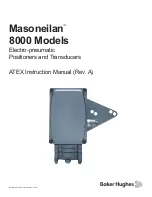
Small Wonder Labs
PSK-40 Transceiver Kit 03/09/10
2000
21
Install C39 and C121 (.1 uF monolithic caps,
'104').
Install R57 (2.2K, red/red/red).
Install D13 and D14 (1N4148). Observe the
installation polarity as shown on the
silkscreen.
Install the BNC connector.
Install R54 through R56 (1.5
Ω
,
brown/green/gold).
Using a small screwdriver blade (or 8-10d
common nail) as a 'form', bend the 3 leads
downward at a 90
°
angle as shown,
immediately.outboard of the wide portion of
the leads
. Take care to ensure the resulting
bent leads are uniformly distant from the
transistor body.
Place the heat sink on the board, insert Q11's
three leads into the corresponding holes in the
board.
(Do not solder yet.)
Place the 1/4"
(6.3mm) machine screw through the hole in
the transistor tab and through the heatsink and
printed circuit board. Secure in place with a
nylon nut. Make sure that the heat sink is
aligned parallel with the board before
tightening the nut.
Tighten cautiously- the
nylon nut threads will strip at the torque
typically used for steel hardware
.
Solder
Q11's leads into place.
Caution: do not substitute a metallic nut here!
You may find it easier to pin the transistor
and heat sink together with the machine
screw, using a fingertip to hold the screw
down while inserting the transistor leads into
the board.
BNC
T2
L
1
2
L13
C
1
2
2
J5
C43
C41
C40
C42
.01
330
680
680
330
.1
R57
D14
2.2K
J6
.1
C39
+ -
D13
T
P
2
Q11
C121
L11
C121A
1.5 (3 pl)
R
5
4
R
5
5
R
5
6
That's it- board assembly is complete
!
CLEAN UP YOUR ACT!
Before you proceed to
checkout, grab some cotton swabs and use acetone
(nail polish remover) to remove solder flux from the
underside of the PC board. The result is a much cleaner
appearance once you've completed this step.
Use
caution to avoid getting acetone on the top side of the
boards- some of the plastic items may be softened by
contact with it.






































